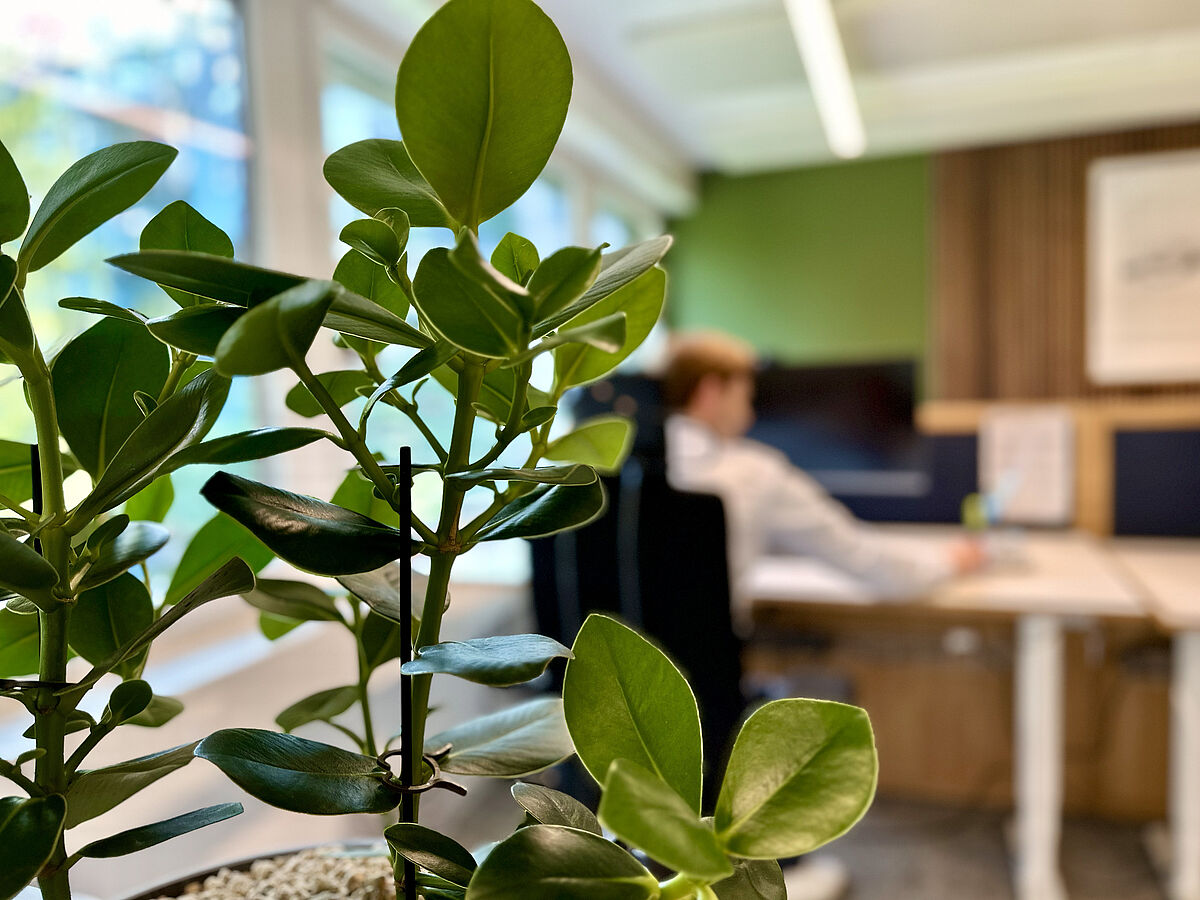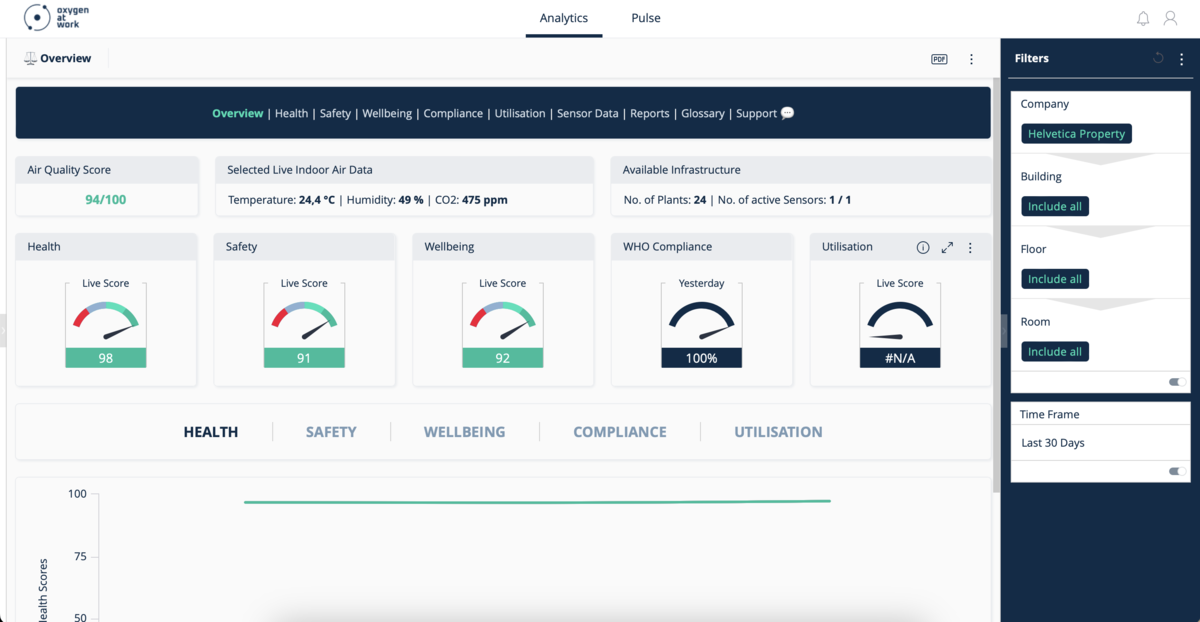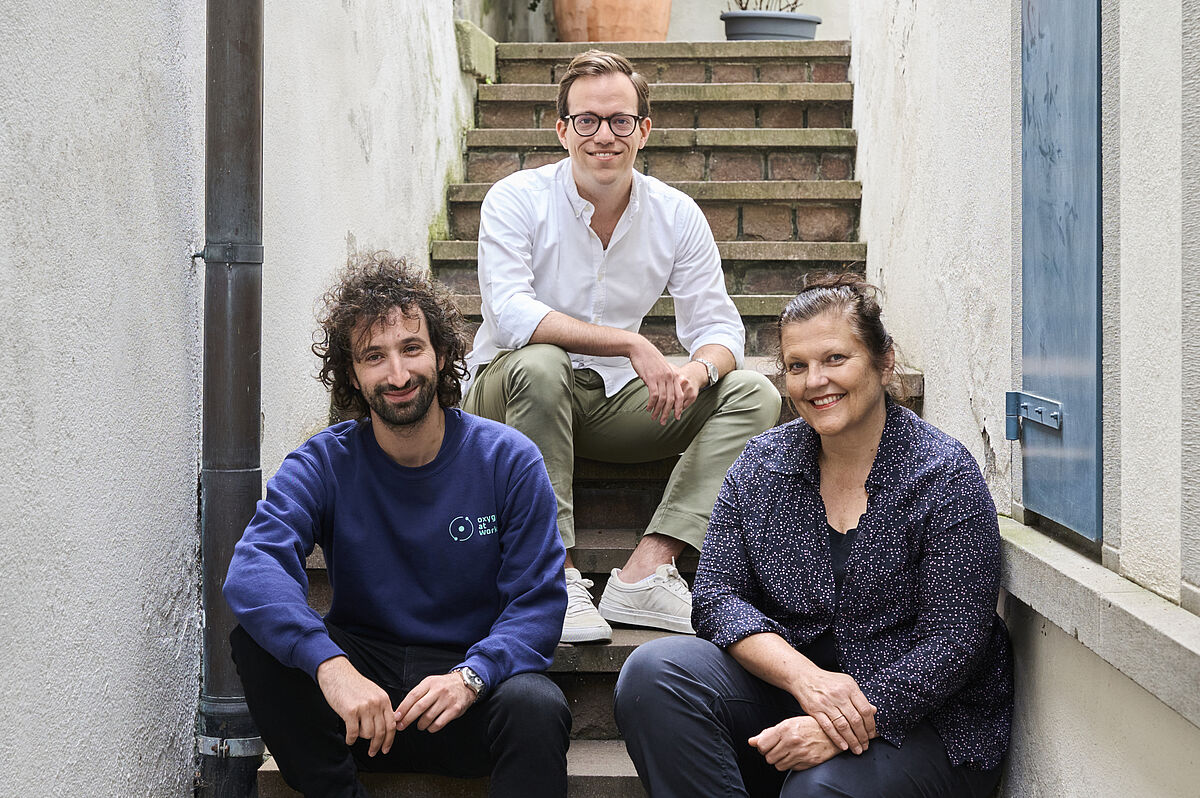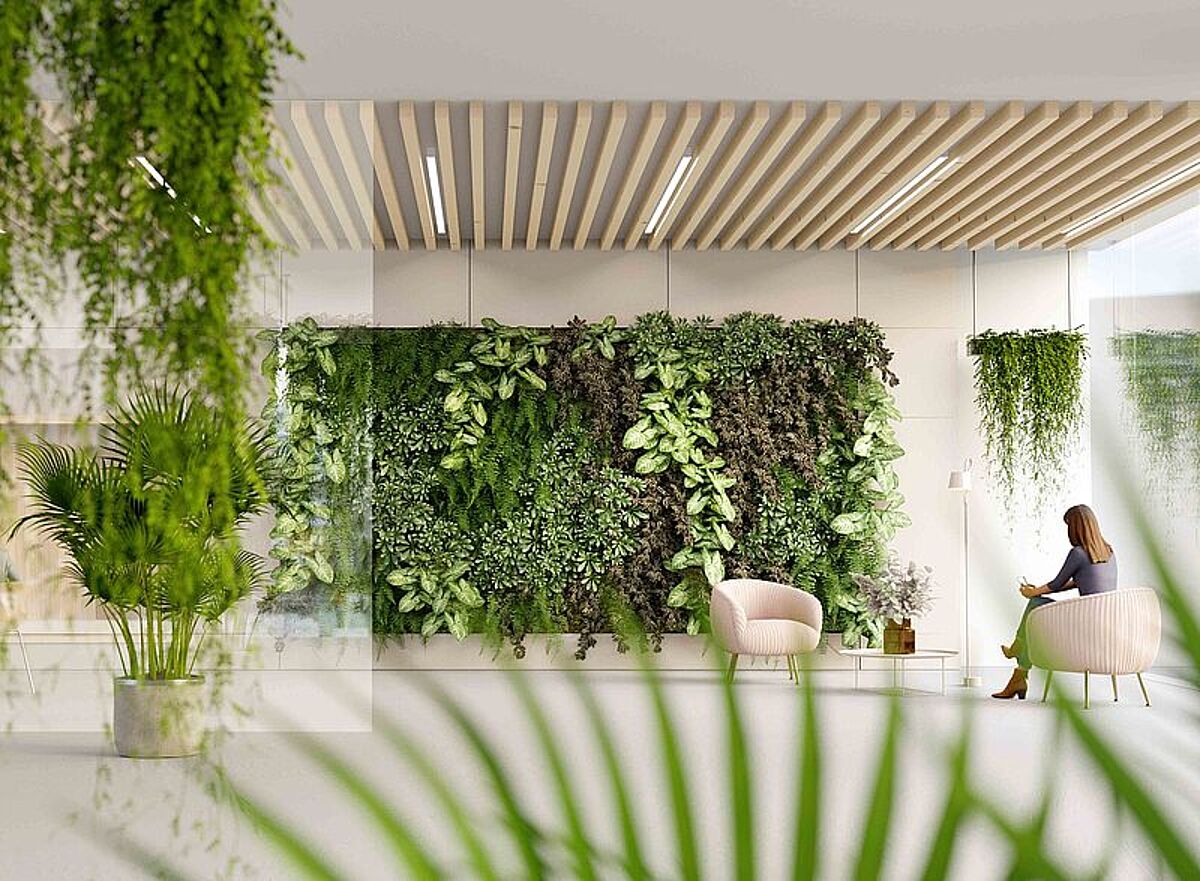![[Translate to Englisch:] [Translate to Englisch:]](/assets/_processed_/e/e/csm_helvetica-pflanzen-2_30d69d2973.jpg)
Interview: Andreas Benz, Editor-in-Chief of Helvetica Magazine
What does Oxygen at Work do?
Joel Bloch: Oxygen at Work combines smart greening and natural plants with IoT technology. This allows us to implement visually appealing greening concepts while also significantly improving and promoting healthier air quality in the office. Our gardeners ensure a sustainably green result through regular maintenance using our smart office plant subscription model.
How did the idea for Oxygen at Work come about?
Six years ago, we started Oxygen at Work with the aim of enhancing the gray and sterile office environment with plants. As a biology student, I was fascinated by photosynthesis and wanted to bring the forest feel into the office. Together with Manuel Winter and Rita Salathé, we developed the ideal combination of sensors, software, and plants to make air quality and plant efficiency more measurable. We presented the idea to companies, and today we have around 40 employees who all share the goal of making nature accessible in the office.
How does Oxygen at Work combine plants and technology to improve air quality in offices?
We view the office as a complex ecosystem and add plants as an additional component. Plants are known to absorb CO2 and release oxygen. Our goal is to capture and optimize this ecosystem with plants to achieve better air quality.
What scientific research supports Oxygen at Work's plant concept?
The idea that plants improve air quality is not new. Plants are essential for oxygen production and were already studied by NASA in the 1980s. Researchers discovered that plants can also filter certain substances from the air. We closely collaborate with our own research and development department, EMPA, and various universities, constantly advancing this research.
Which plant species does Oxygen at Work recommend to increase oxygen supply and reduce air pollutants?
The right mix of plants is crucial not only for air quality but also for humidity. During the heating season, many employees suffer from dry air. Plants have a positive influence on humidity as they release water through transpiration. As a result, room humidity can increase by approximately 15 percentage points without the need for humidifiers or energy.
How have the over 400 completed projects affected employee health and productivity?
Regular surveys among the employees of our clients confirm that they feel more comfortable in green environments. This is an important factor as many companies aim to bring their employees back to the office more frequently after the COVID-19 pandemic. The design of the workplace has gained significant importance since then.
How does Oxygen at Work contribute to reducing the ecological footprint of companies?
By improving air quality through plants, we contribute to CO2 reduction. We have been assessed by the Federal Office for the Environment and thus contribute to Switzerland's CO2 targets. Specifically, plants improve air quality, relieving building automation. Building operation accounts for about 30% of CO2 emissions. Thanks to our sensors, software, and the right mix of plants, we can achieve a relatively significant effect here.
What information and data do your customers receive?
We collect comprehensive raw data from the air and create various indices such as the Health Index, Sustainability Index, and Productivity Index. Each customer receives their individual score compared to the benchmark, and monthly reports are also shared with employees and stakeholders. This transparency allows us to demonstrate the measurable effects of plants.
What specifically do you do in the offices of Helvetica?
For the offices of Helvetica, we have developed a smart plant concept. We use a mix of five different plant species that are effective and aesthetically appealing to meet the high requirements for air quality and design. Helvetica, as a real estate investor, recognized early on that plants can increase the value of a building. Plants make rental spaces more attractive and profitable, aligning with the clear trend of ESG investments.
How do employees respond to the smart plants?
Younger employees generally prefer more plants, while older employees may still have some skepticism due to past experiences with "rubber plant syndrome." However, once they learn about the benefits of the plants and see that we take care of them, many reservations tend to disappear.
What sets the Oxygen at Work team apart?
Our team is highly diverse and includes engineers, biologists, historians, medical professionals, and gardeners. We all share the goal of making nature accessible in the office and leveraging technology to make it more efficient. We don't replace nature with technology; instead, we make nature more efficient with technology. It's important for us to provide our colleagues with a workplace where they have fun, a genuine purpose, and of course, lots of plants.
What does the future hold for Oxygen at Work?
Our vision is to create green cities and establish a symbiotic relationship between urban areas and nature. We aim to bring people and nature into harmony and make nature accessible in the city.






![[Translate to Englisch:] [Translate to Englisch:]](/assets/_processed_/f/5/csm_Dominik-Fischer_f14ef74de8.jpg)